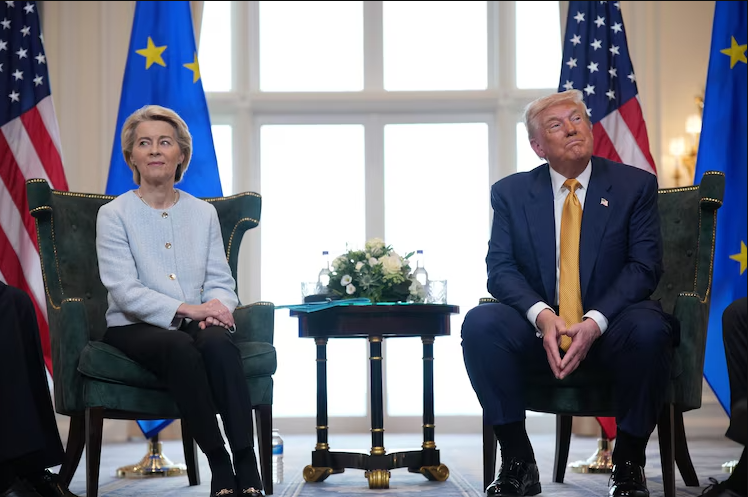Understanding President Trump’s New Trade Agreement with the European Union
President Donald Trump announced a new trade agreement with the European Union (EU) on Sunday, aiming to ease escalating trade tensions and avoid the steep tariffs that were set to take effect in early August. This deal is part of a broader effort by the White House to renegotiate trade terms with key partners amid ongoing tariff threats on multiple countries.
Key Highlights of the U.S.-EU Trade Deal
The agreement notably reduces the tariff rate on European goods entering the U.S. from a threatened 30% down to 15%. While this rate remains higher than the 10% tariff applied to many other countries, it matches recent tariffs imposed on Japanese products. Meanwhile, tariffs on goods from Vietnam and China remain at 20% and 30%, respectively.
In addition to the lowered tariffs, several exemptions are included for important sectors such as aircraft, semiconductor equipment, and certain chemical and agricultural products, ensuring smoother trade flow in these critical industries.
Mutual Commitments: Trade and Investment
In exchange for the reduced U.S. tariffs, the EU agreed to lower its tariffs on American-made cars from 10% to 2.5%, facilitating increased U.S. auto exports. Furthermore, European companies have committed to purchasing $750 billion worth of energy-related products from the U.S. over the next three years. On top of that, they plan to invest an additional $600 billion in the American economy, signaling a strong partnership in trade and investment.
Economic Context and Trade Balance
In 2024, the EU imported approximately $370 billion in U.S. goods, while the U.S. imported about $605 billion worth of goods from Japan alone. The trade deficit between the U.S. and the EU stood at $235.6 billion last year, reflecting a 13% increase compared to 2023. Key U.S. imports from Europe include pharmaceuticals, cars, machinery, wine, and perfume.
Typically, tariffs increase consumer prices as importers pass on costs. However, so far, major tariff-related price hikes have been largely avoided under this agreement.
What’s Next?
This deal with the EU follows similar agreements the Trump administration brokered with the United Kingdom, Indonesia, Vietnam, the Philippines, Japan, and a preliminary deal with China. Despite these accords, tariffs on several major trading partners—including Canada, Mexico, South Korea, and Brazil—are set to take effect on August 1.
White House officials emphasize that these tariffs are a strategic tool to negotiate better trade terms for American workers and businesses. President Trump confirmed that the August 1 deadline for tariffs will not be extended, underscoring his administration’s commitment to follow through on its trade policies.
European Commission’s Perspective
European Commission President Ursula von der Leyen described the agreement as a source of “certainty in uncertain times,” offering stability and predictability to businesses and citizens on both sides of the Atlantic.



